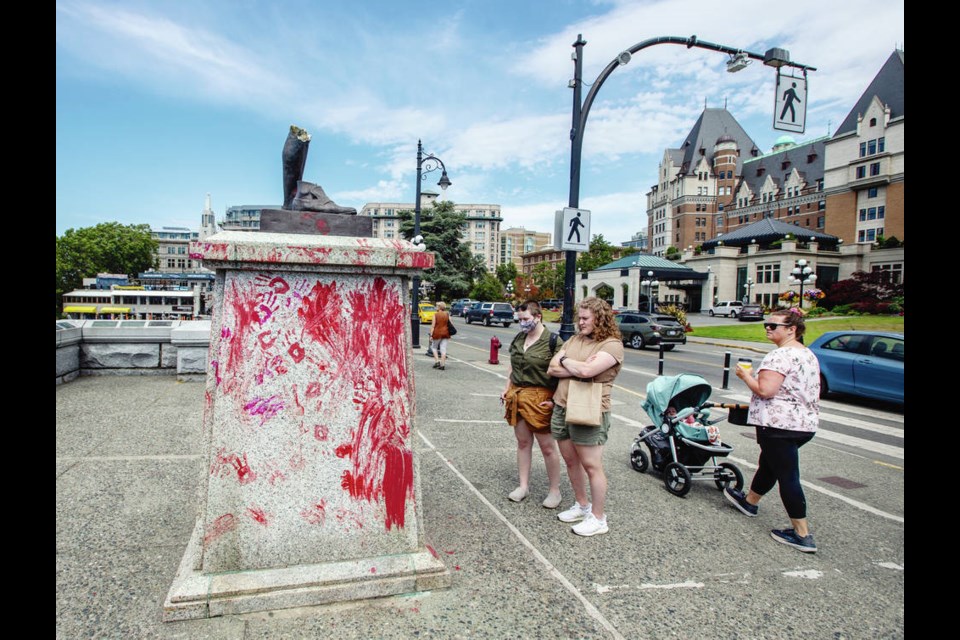Protesters who ripped a statue of Capt. James Cook off its pedestal on Canada Day, leaving a plinth smeared with red handprints, have created a new kind of attraction that is drawing plenty of comment from tourists and locals alike.
On a sunny Wednesday afternoon on the Inner Harbour, everyone seemed to have an opinion on the defaced monument and the message protesters were trying to send about the impact of colonialism on Indigenous peoples.
“Painful as it is to look at, the monument now serves as a wake-up call of a part of history that most of us never learned about,” said Jason Banducci, a visitor from Toronto. “It may be ugly, but it is about an ugly part of Canadian history.”
Banducci, 32, who is in town with his partner, Margo Paterson, said he was warned by local friends about what he might see while out walking.
The sight of the monument elicited strong emotions for Jackie Linke from Revelstoke.
“My late mother was a residential school survivor,” said Linke, 51. “I only learned about the history of residential schools when I took Indian Studies in school. Even when I asked her about it, it was hard for her to talk about it. She eventually told me about eating mouldy bread, wearing shoes that were too small for her and being forced to write with her right hand despite being left-handed.”
When she was a little girl, she said, she visited relatives who were attending the school and was struck by the smell of diarrhea that hung in the air.
She is not sorry to see the statue go.
“When you visit Germany, you don’t see any statues of Hitler.”
Kirk Smith, who was downtown waiting for a friend to pick him up, said he was embarrassed by the actions of protesters.
“I am not a fan of vandalism,” said Smith, who was born here. “Doing this isn’t going to erase history. If we are working towards reconciliation, acts like this do not further their cause. It’s just hooliganism and not the way to improve relations.”
The son of a policeman, Smith was surprised police on Canada Day did not prevent the crowd from pulling the statue down and throwing it into the Inner Harbour.
He said it’s fortunate that the causeway where Captain Cook’s statue once stood wasn’t packed with visitors on a sunny summer day, the way it normally would be pre-COVID.
“It’s perhaps a good thing that we’re not having thousands of people see this. It’s ugly and has an effect on tourism, the region’s bread and butter.”
Aldouz Santos, an 11-year-old in Grade 5, called the removal of the statue and the red handprints on the plinth an act of vandalism.
“The red reminds me of blood,” said Santos, who researched the issue on his own after learning of it at school.
He also learned about a totem pole on the Malahat that was set on fire, possibly as an act of revenge for the toppling of the statue.
“I understand that some people are upset and want revenge, but I wish people would just stop fighting.”



